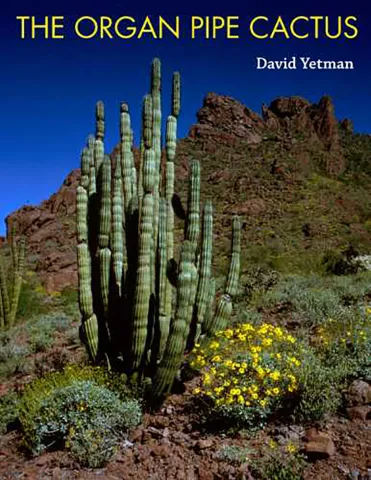
Distinguished by its slender vertical branches, which resemble the tubes of a pipe organ, and growing to the imposing height of 15 to more than 30 feet, it’s obvious how the organ pipe cactus got its name. In the United States, these spectacular and intriguing plants are found exclusively in a small area of the Sonoran Desert in the southwestern corner of Arizona. With a landscape marked by sharp, rocky slopes and daytime highs in the summer reaching 110 degrees Fahrenheit, the region is inhospitable for most ordinary life, whether plant or animal. But the organ pipe cactus is far from ordinary. Although it is the most common columnar cactus, it is so unusual in the United States that it is only one of three cacti to have a national preserve established to protect it. In this regard, it joins a select group of plants—including Joshua trees, redwoods, and sequoias—upon which that honor has been conferred. In this beautifully illustrated, large-format book, David Yetman provides an in-depth and comprehensive look at these intriguing and picturesque plants that most Americans will never have the opportunity to see. Chapters explore their ethnobotanical uses, their habitat, their distribution, and special conditions required for their germination, establishment, growth, and survival. Yetman also places the organ pipe in perspective as a member of a genus with at least twenty-three species, ranging from the prostrate Stenocereus eruca of Baja California to the 50-foot high giant S. chacalapensis of the coast of Oaxaca.

